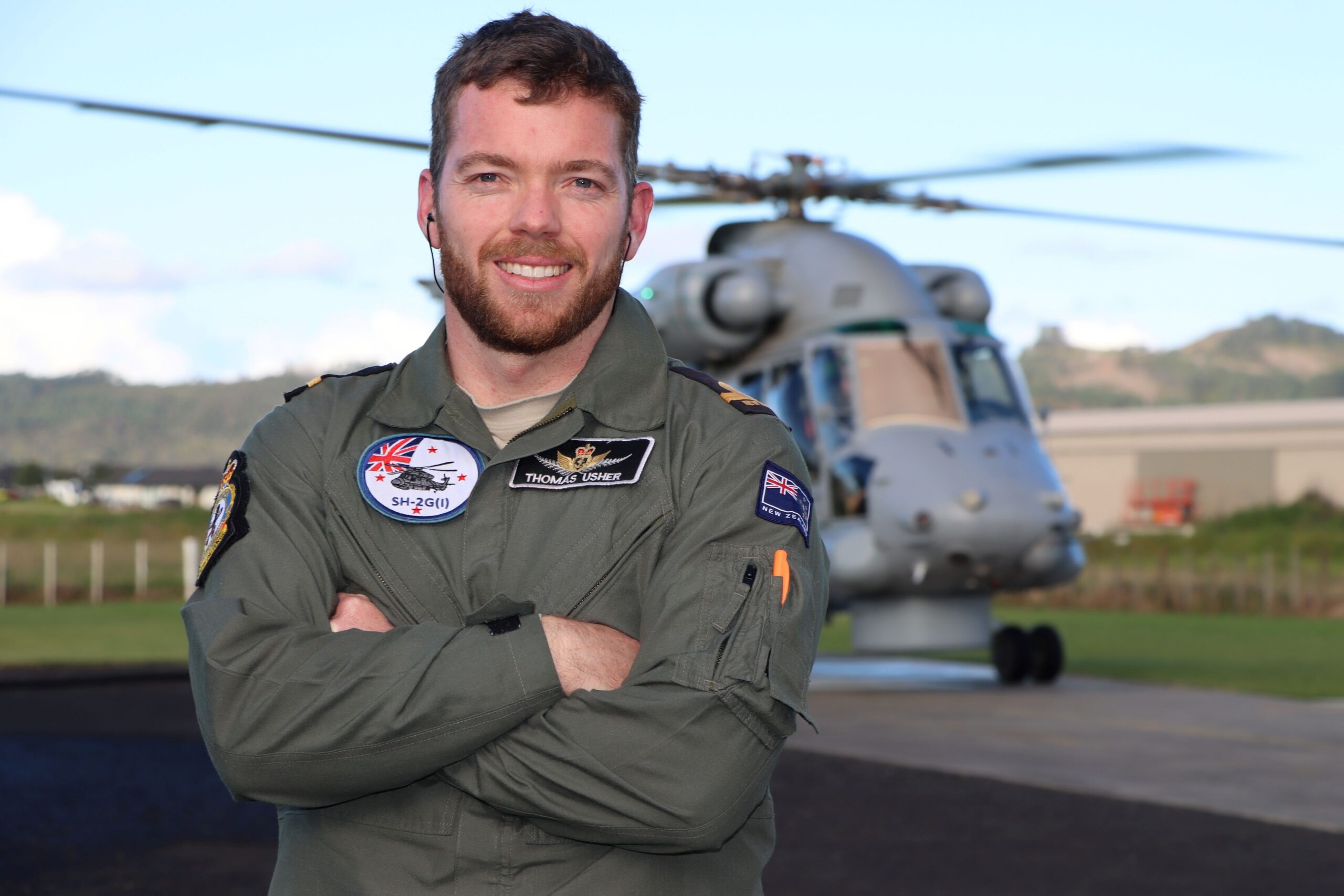The Coromandel region has provided the perfect conditions for Royal New Zealand Navy (RNZN) SH-2G(I) Seasprite helicopter training.
Using Whitianga Airfield as their base and supported by a maintenance team from Royal New Zealand Air Force’s No. 6 Squadron, the RNZN aircrew were in the region to undertake mountain flying training.
RNZN Sub Lieutenant Tom Usher was one of the personnel taking part in the Seasprite Operational Conversion Course, which teaches the crew how to operate the aircraft in advanced and challenging environments.

It’s the first time that Sub Lieutenant Usher has put his hand to mountain flying.
“It was really exciting to go into the mountains and try something different. The Seasprite is a maritime warfare capable helicopter, so we’re usually based off the back of a ship. Mountain flying is a smaller part of my role, but we still need to train in different environments so we can respond when called upon. This week has been really invaluable,” the 30-year-old Aucklander said.
The RNZN Commanding Officer of No. 6 Squadron, Commander Alex Trotter said the Coromandel was challenging to fly around, especially when combined with weather conditions such as strong winds and low cloud.
“The Coromandel is an excellent representation of the type of South Pacific environment that we are expected to operate in, with very similar terrain to places like the Solomon Islands, the Kermadecs and Sub-Antarctic island chains. It’s a mixture of very sharp relief with high ridges and pinnacles, leading into deep, forested valleys,” he said.

“This is very difficult terrain to fly around, so training our crews here sets them up for success when we ask them to conduct land-based operations,” Commander Trotter added.
During the week-long training Sub Lieutenant Usher practised a range of manoeuvres including approaching pinnacles, crossing ridges, and up-valley and down-valley approaches.
“The Seasprite normally operates over water at about 400 feet. In this training we were getting up to 3,000 feet, but the real difference is the terrain. Learning how to approach mountainous terrain and the environmental conditions you need to consider, especially knowing how to position the aircraft to avoid turbulence created by strong winds hitting the sharp terrain,” Sub Lieutenant Usher said.
Most of Sub Lieutenant Usher’s family have served in the Royal Navy, but he started his career “on the beat’ as a constable with New Zealand Police in Invercargill before enlisting in 2019 as a Bridge Watchkeeper.
“I really enjoy the mental stimulation you get from the job. No two days in the Navy are the same. It’s about problem-solving and using the information to come to the best solution. I find it really rewarding and that’s what sets it aside from other jobs. It’s good fun,” he said.
The training will result in Sub Lieutenant Usher being able to fly unsupervised. He will finish the course at sea on HMNZS Te Mana as part of Exercise Bersama Lima in Malaysia later this year.




